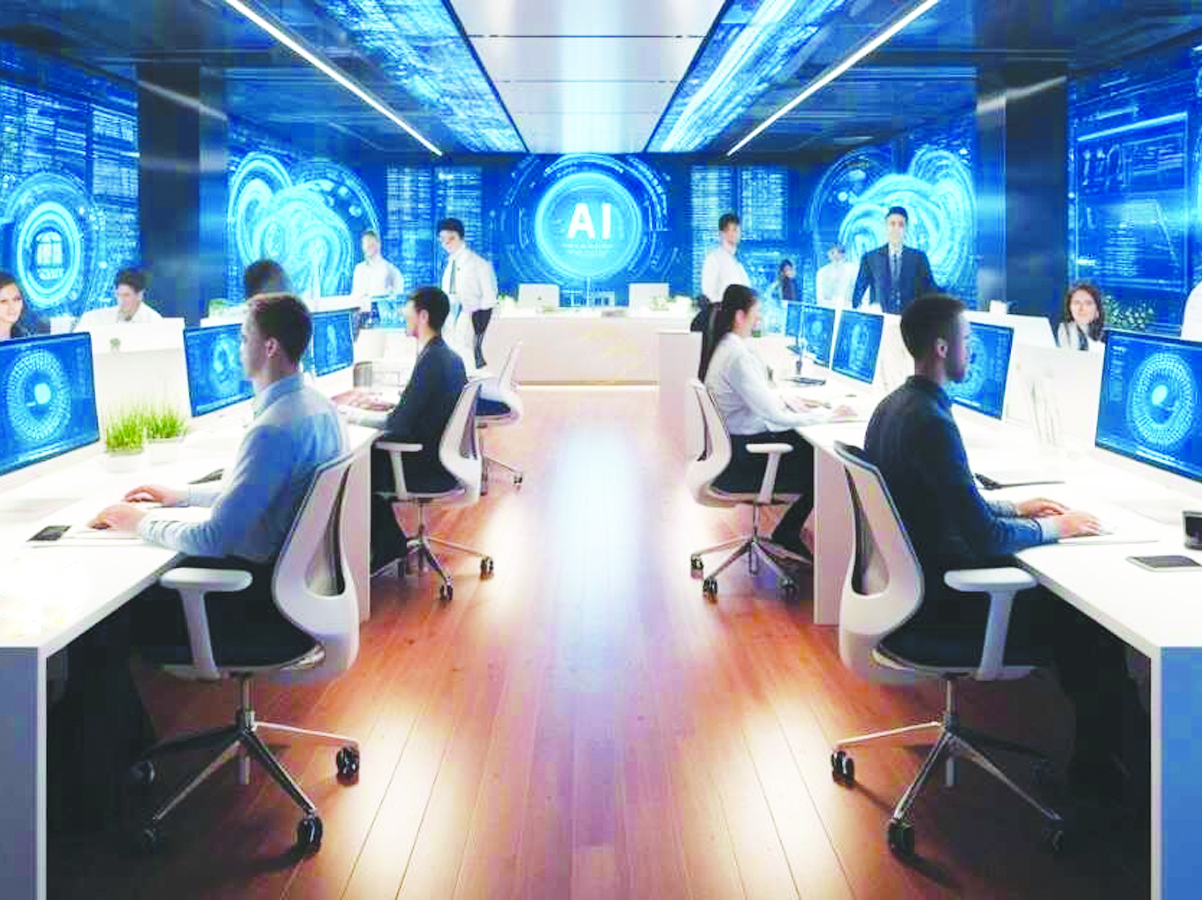Remote Collaborations powered by AI technology can bring a transformative change in both the efficiency and effectiveness of hybrid workplaces.
The hybrid work model and Artificial Intelligence (AI) are proving significant in transforming how firms function today. A hybrid work setup, which blends the benefits of both worlds–remote and in-office–offers work-life balance to employees and significant cost savings to organizations. Whereas AI is helping businesses and work professionals to boost productivity, automate mundane tasks, innovate, and more.
With growing AI demand and adoption rates, this cutting-edge technology if integrated with the hybrid work model can unlock a whole new level of efficiency, transform operations, and boost engagement. It can also solve major challenges of hybrid work such as communication gaps, misaligned goals, and collaboration. This article will explore how the embracement of AI by hybrid workplaces can boost remote collaboration, cater to unique use cases, and ultimately add up to their overall success.
How AI is Enhancing Remote Collaboration?
In a hybrid workplace, where people work from different geographies and time zones, often experience communication and collaboration issues. By leveraging AI tools, professionals working in remote setups can experience better engagement and communicate effectively. A recent report observed that 75% of teams that use AI tools collaborate better. Here’s how these tools improve interactions through:
a) Real-time Translation: AI-driven tools can break communication barriers and facilitate collaboration among team members who speak different languages. These tools can translate live conversations to ensure seamless interactions without any hassle.
b) Meeting Management: AI meeting tools offer invaluable features such as real-time transcription, automated summaries, action items, and more. With these tools, teams can meet virtually without worrying about taking important notes, creating MoM, or organizing information. AI-powered tools like Zoom or Fireflies.ai not only improve collaboration, but also leave room for strategic activities, creative ideation, and better decision-making, and lead to better attention in online meetings.
c) Retrieval-Augmented Generation (RAG): RAG further enhances AI to fetch information, which is more accurate
Driving Success in Hybrid Workplaces: AI’s Multifaceted Role
a) Boost Security and Privacy: Businesses operating with hybrid setups often have a higher risk of cybersecurity because of a lack of physical observation. Data leaks, compliance challenges, or system misplacement are some common issues that businesses experience in remote work.
The use of AI-driven tools can help firms continuously monitor to detect unusual patterns, unauthorized access, or malicious incidents. With advanced threat detection and incident response, AI can also help enterprises stay compliant by encrypting data and enforcing clean desk policies. Especially in industries such as healthcare and finance where hefty amounts of personal data are stored daily, these capabilities can prove to be game changers.
b) Enhance Productivity and Workflows: With AI in action, mundane tasks such as data entry, scheduling meetings, note-taking, or email management can be automated. This intelligent automation creates room for professionals to focus on critical thinking, innovative tasks, and leadership activities. Not just streamlining tasks but AI can also help to monitor the activities of distributed teams in real-time to keep track of how people are working at home or in office spaces. In addition, AI-powered predictive analytics learns from vast amounts of data to identify employees’ work trends, productivity levels, improvement areas, and even the propensity of future work behaviour of individuals. Moreover, It also spots skill gaps and provides learning material tailored to individuals’ weaknesses and strengths.
Conclusion
The work preferences of people are changing. As a result, more and more companies are now adopting hybrid/remote work models because of the flexibility and scalability it brings to organizations as well as employees. However, this work model has its own sets of unique challenges from communication gaps and collaboration challenges to security risks and technology dependencies. That is why it’s important to lead this workplace transformation with modern AI technology to overcome unique challenges and thrive in changing business dynamics. By using AI in an ethical way, this innovative tech has the capabilities to redefine hybrid work culture by creating a human-centric, sustainable environment, where businesses and professionals can work together without compromising on their productivity, growth, and trust.
Deepali Gola is currently Marketing Head at Shephertz.

